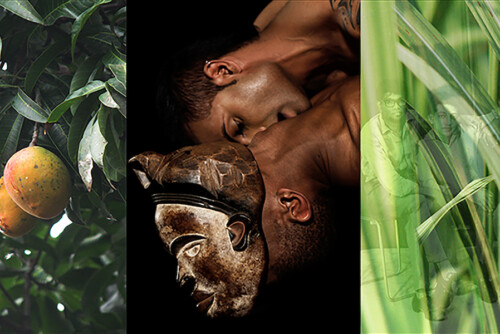The most virulent reactionary voice was without a doubt that of Maurice Hamel. In the rubric of “Irreverent Letters” of an issue of La Rumeur that appeared in January 1928, Hamel published a letter addressed to Baker whose tone recalls the violence of the American South:
Because of your mediocrity, your complete absence of any type of talent and, above all, the indecency of your physique, you dishonor the French music hall. […] The imported American article that you offer to the spectators in our country should be forbidden by superior order. […] Perhaps the Parisians themselves will soon condemn you to death. […] Be strong, O Josephine! Disappear forever. Take the next ship leaving for America.
Par votre médiocrité, par votre absence complète de toute espèce de talent et, surtout, par l’indécence de votre physique, vous déshonorez le music-hall français. […] L’article d’importation américaine que vous offrez aux spectateurs de notre pays devrait être interdit par ordre supérieur. […] Peut-être les Parisiens eux-mêmes vous condamneront-ils bientôt à mort. […] Ayez ce courage, ô Joséphine! Disparaissez à jamais. Prenez le premier paquebot en partance pour les Amériques. 1
Baker didn’t take the boat to America. On the contrary, she undertook a two-year European tour and returned transformed, passing from the status of “commercial star” to that of a “great artist.” “The Charleston, the ‘bananas,’ that’s over, you see?” (“[L]e charleston, le ‘banana’s,’ c’est fini, compris?“) she declared in an interview in 1929. 2 In her performance in the revue Paris qui Remue at the Casino de Paris in 1930-31, she expanded her register to include vocal numbers and comedic sketches. Compared from this point on to Mistinguett, the darling of the French music hall, she affected the posture of a grande dame des planches (queen of the stage), adorning herself with sparkling tiaras and feathered trains. 3 In the eyes of the press, Baker had become civilized. “The former star of the Revue Nègre,” wrote a critic in 1930, “who formerly made a scandal and sensation by her frenzy, her extravagance, her savage spontaneity, has been assimilated by Western civilization.” 4 A 1931 article in Le Figaro saw this transformation as the mark of Europe’s civilizing power: “For those who […] attended her début […] and who find her again at the Casino de Paris in 1931, Josephine is the best example of the improvement possible in the intellectual shaping of the black race by European civilization.” 5 What is striking in the description of Baker’s self-motivated metamorphosis is the use of color as a metaphor for the process. According to a number of critics, Baker had gotten whiter. 6 “[S]he gets visibly whiter and, as she was never completely black, she seems whiter today than many of our fashionable women returning from the South of France” (G. de Pawlowski 1930). Assimilated in part, she was promoted to an intermediary zone: “She is no longer a black woman and not yet a white woman, without it being exactly possible to say if there is too much coffee in her milk or not enough milk in her coffee” (Saint-Bonnet 1928).
- Maurice Hamel, “A Mademoiselle Joséphine Baker,” La Rumeur, 14 jan. 1928.[↑]
- Georges Schmitt, “Joséphine Baker passant à Paris nous dit…,” Volonté, 20 avril 1929.[↑]
- This stage image translated as well in Baker’s quotidian life. Constructing a glamorous public persona, Baker adorned herself in jewels from Tiffany and Cartier and dressed in gowns designed by Paul Poiret and Coco Chanel. She bought a fifteenth-century chateau in the Dordogne Valley with 50 rooms and a bed said to have belonged to Marie Antoinette. See Wendy Martin, “Remembering the Jungle: Josephine Baker and Modernist Parody,” in Prehistories of the Future: The Primitivist Project and the Culture of Modernism, ed. by Elazar Barkan and Ronald Bush (Stanford: Stanford University Press, 1995), pp. 313, 323.[↑]
- Dominique Sordet, Ric et Rac, 8 nov. 1930 (in Abatino 1931, p. 35).[↑]
- Jean Sejournet, Le Concours Medical, 8 fév. 1931 (in Abatino 1931, p. 20).[↑]
- Baker was outraged by this claim: “It’s blasphemy,” she declared, “I have not gotten one drop whiter!” (“Joséphine et ses mémoires,” Cyrano, 7 déc. 1930).[↑]



